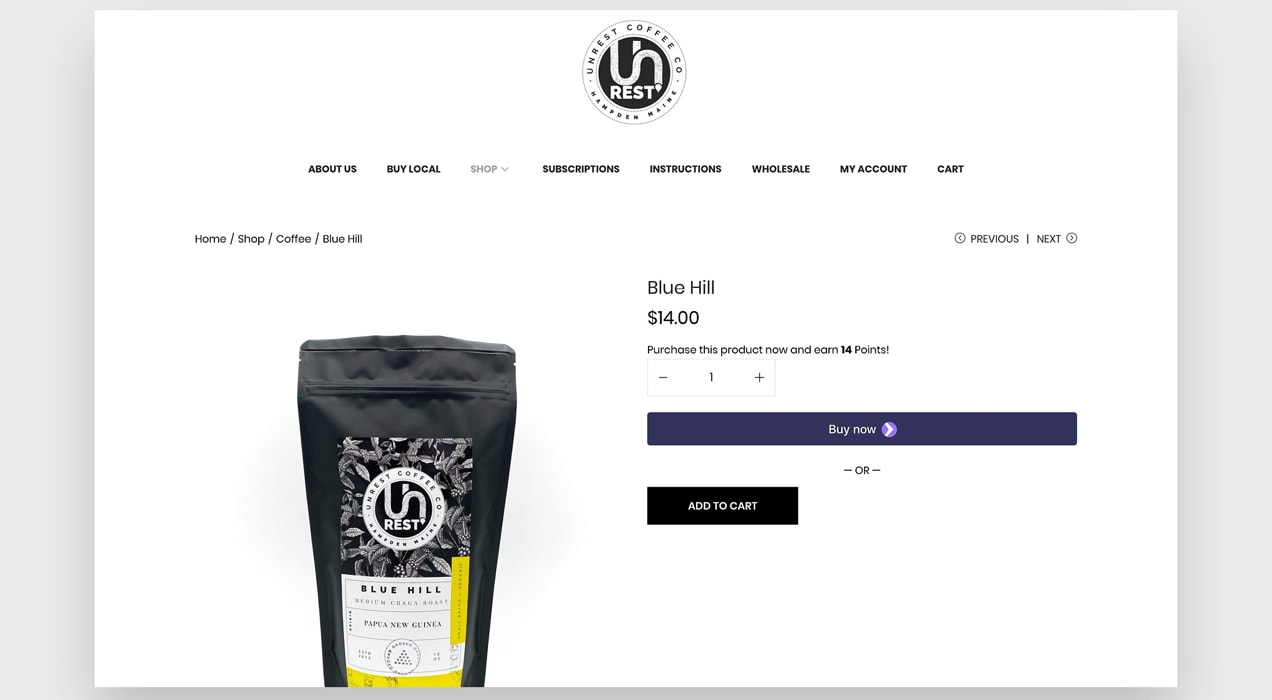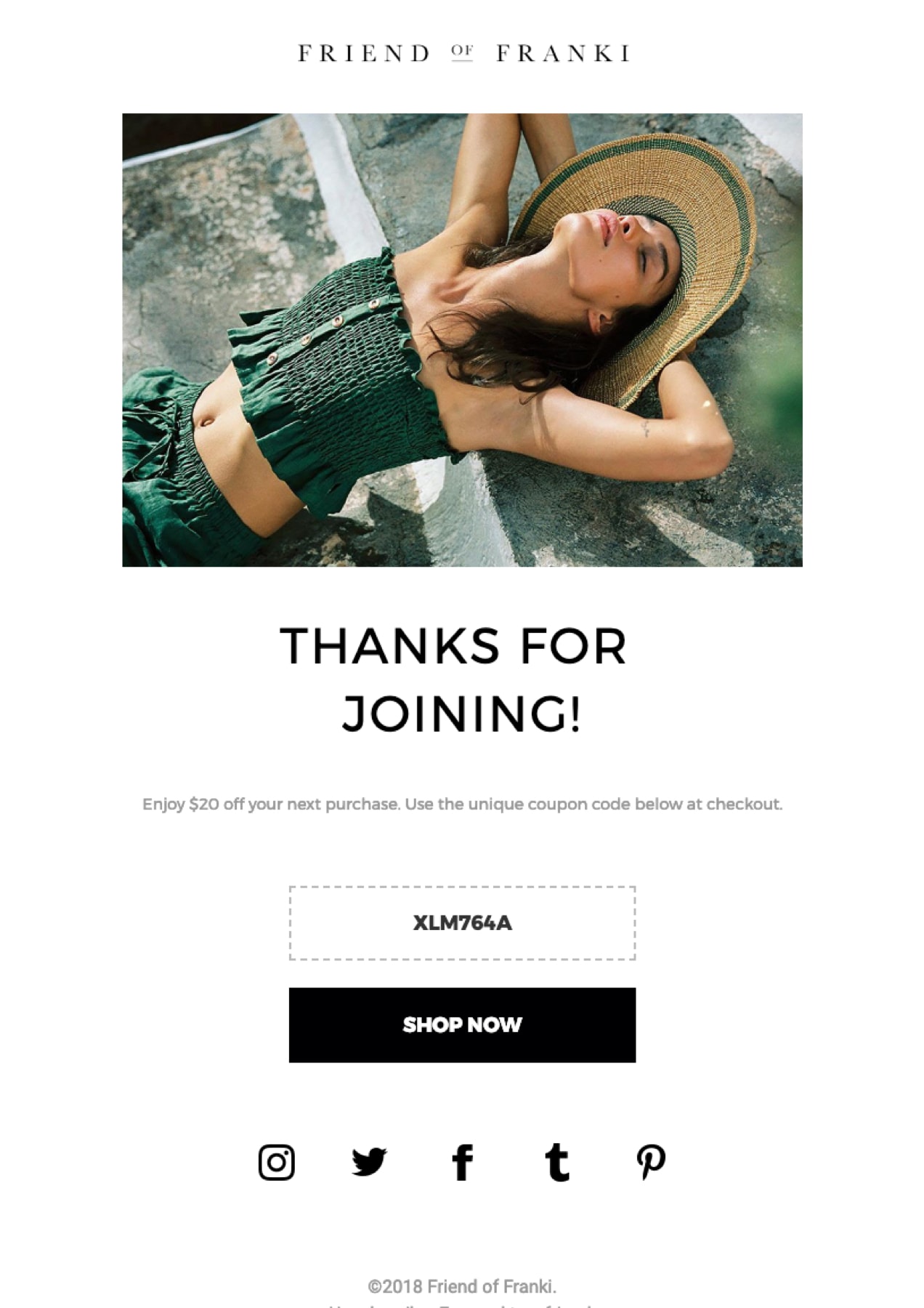For online stores in particular, email marketing is the best way to connect with existing customers and followers — those who have already bought from you or are signed up for your list. Many businesses spend marketing time and money trying to win new customers, not knowing that the easiest path to revenue growth is in maximizing the relationship with the customers you already have.
In summary: email marketing is the best way to connect with the largest number of existing customers for the smallest cost. Here are the top seven strategies for maximizing your email marketing efforts:
1. Segment your list
↑ Voltar Para o TopoIf you’re just starting, consider breaking it down into four categories (some customers may fall into multiple categories):
- Repeat customers.
- One-time buyers.
- Subscribers who haven’t purchased yet.
- Lapsed customers who haven’t bought anything recently.
For lapsed customers, defining “recently” may look different for each business. A customer who buys dog food every month, but then goes three months without buying is someone you should reach out to. If you sell shoes, you know most people don’t buy new shoes every month. Figure out when it’s been too long since customers have bought something from your business.
Many email marketing tools, like AutomateWoo, offer simple list segmentation. Select a group of subscribers that meet certain requirements — like those with active subscriptions or who placed an order within the last three months — and send an email written specifically for them. Segmenting in this way makes it much easier to come up with effective email marketing ideas.
2. Market to each email segment differently
↑ Voltar Para o TopoEach customer segment you create offers different marketing opportunities.
Repeat customers
These are your most loyal buyers; make them feel appreciated! Focus on ways to provide extra value so they’ll come back time and time again. Who knows? They may even share your products with friends and family members.

Here are a few ways to engage with repeat customers:
- Ask for referrals and online reviews, and offer points and rewards.
- Give exclusive access to new products.
- Send free gifts when they spend a certain amount.
- Thank them for being a great customer!
- Ask them to follow you and engage on social media — and offer additional rewards.
One-time buyers
The key here is to motivate a second purchase. To do that, you must be consistent, which can look different for each individual business. Dog food customers may appreciate tips about pet health every week, but shoe shoppers may find a weekly email a bit much. Do what makes the most sense for your audience and keep an eye on your unsubscribe rate. If customers become disinterested, you may need to adjust your content or send fewer emails.
Give one-time buyers discounts on items that cost more than what they’ve already bought and consider offering bulk discounts or product bundles. With tools like AutomateWoo, you can even personalize coupons based on customer actions.
Subscribers who haven’t purchased
For email list subscribers who haven’t yet purchased, consider what they’ll find most valuable. For some, that might be a welcome discount or coupon that encourages them to make a purchase.

If you sell high-end products, though, you may not want to offer discounts. Instead, send valuable non-sales content, like answers to common questions, or solutions to problems you know customers deal with.
Lapsed customers
Customers typically lapse for one of several reasons:
- They were unhappy with their purchase.
- They don’t need to purchase very often.
- Your products (or business) aren’t top of mind.
For these buyers, focus on delivering value and demonstrating your worth. Offer free shipping, limited-time offers, or “we miss you” discounts to encourage them to purchase again. Also send out useful content — tips and inside information, ideas for using your products, helpful videos — so when they’re ready to purchase again, you’re the first brand they think of.
3. Vary your email length
↑ Voltar Para o TopoA good standard length is 300-500 words but this varies based on your industry. Don’t focus too much on length, though. Instead, focus on delivering value and a compelling message with a motivating call-to-action.
Vary the length by varying the purpose. Some emails should sell something. Other emails should thank customers, solve problems, offer encouragement or inspiration, or update shoppers on changes to your online store.
4. Favor smart structure over too much design
↑ Voltar Para o TopoPlenty of testing data shows that pure, text-only emails outperform emails with a lot of design — and by a large margin in some cases. So don’t feel like your emails have to have intricate designs. They don’t.
People respond to messaging and valuable offers that meet their needs. For some products, photos are critical. But overdesigning an email makes it look like marketing, and not a genuine communication.
For structure, use formatting like bold, italics, and colored text. Use subheadings. Use short paragraphs. Why?
Because it keeps the reader moving and allows them to read faster. One 300-word paragraph is far more difficult to read than a 600-word email broken up into small sections.
5. Use call-to-action buttons and links
↑ Voltar Para o TopoA call-to-action is a statement that tells your customers what you want them to do. Don’t just put a call-to-action at the end. Include one early in the email, and again toward the end. For longer emails, you might add one or two in the middle.
Also, use both buttons and text as links. Mix it up. The idea is to give people more than one way to respond.
Personalize your call-to-action. Don’t just say things like “buy now” and “learn more.” These are boring, overused, and under-personalized. Instead, use first-person phrases like “Send my shipment!” and “Sign me up!”
These engage the reader and encourage the customer to do what they’re thinking about doing. You want them excited about how your product will improve their life or make them happier.
Finally, ensure that the color of each button contrasts with the rest of the email. It should be impossible to miss.
6. Manage your deliverability reputation
↑ Voltar Para o TopoAll the previous strategies are effective, but they won’t work if your emails aren’t delivered. For this, you need to have a good “sender reputation.” You can do a couple of simple things to maintain a good reputation with the companies that monitor deliverability.
First, don’t upload contacts to your email list without their permission. This is one of the greatest risks when purchasing an email list. If those on the list complain, it can damage your reputation, ensuring that your emails go straight to spam.
Second, give an option to unsubscribe in all your emails and include contact information. Most reputable email marketing platforms require this. But when someone unsubscribes, don’t go back later and add them back to the list! If they report you as spam, this hurts your sender reputation.
Also, be mindful of any privacy regulations in your area, such as the GDPR. Find out more information about recommended email marketing providers and best practices in our email marketing guide.
7. Become a subject line expert
↑ Voltar Para o TopoIf no one opens your email, it doesn’t matter what’s inside. So devote some time to learning about subject lines.
Your subject line should be relevant, use personalization, and motivate people to click. For more information, Jilt offers a great guide on writing irresistible eCommerce subject lines.
Once you know a bit more about writing great subject lines, you can start practicing them. But also, don’t obsess too much over open rates. Open rates matter, but sales matter more. Would you rather have an email with a 30% open rate — which is very good — but only two sales, or an email with a 15% open rate, but ten sales?
Ideally of course, you want both: a high open rate and a message that converts.
A little goes a long way — get started!
↑ Voltar Para o TopoKnowing the importance of ecommerce email marketing only does you so much good. The key is to put it into practice! Keep these essential strategies in mind to make the most of your efforts and you’ll instantly be ahead of many of your competitors.
WooCommerce makes it easy to integrate with the email marketing provider of your choosing, offering more than a dozen email marketing extensions. Want to learn even more about sending successful emails? Check out our full guide.
About





